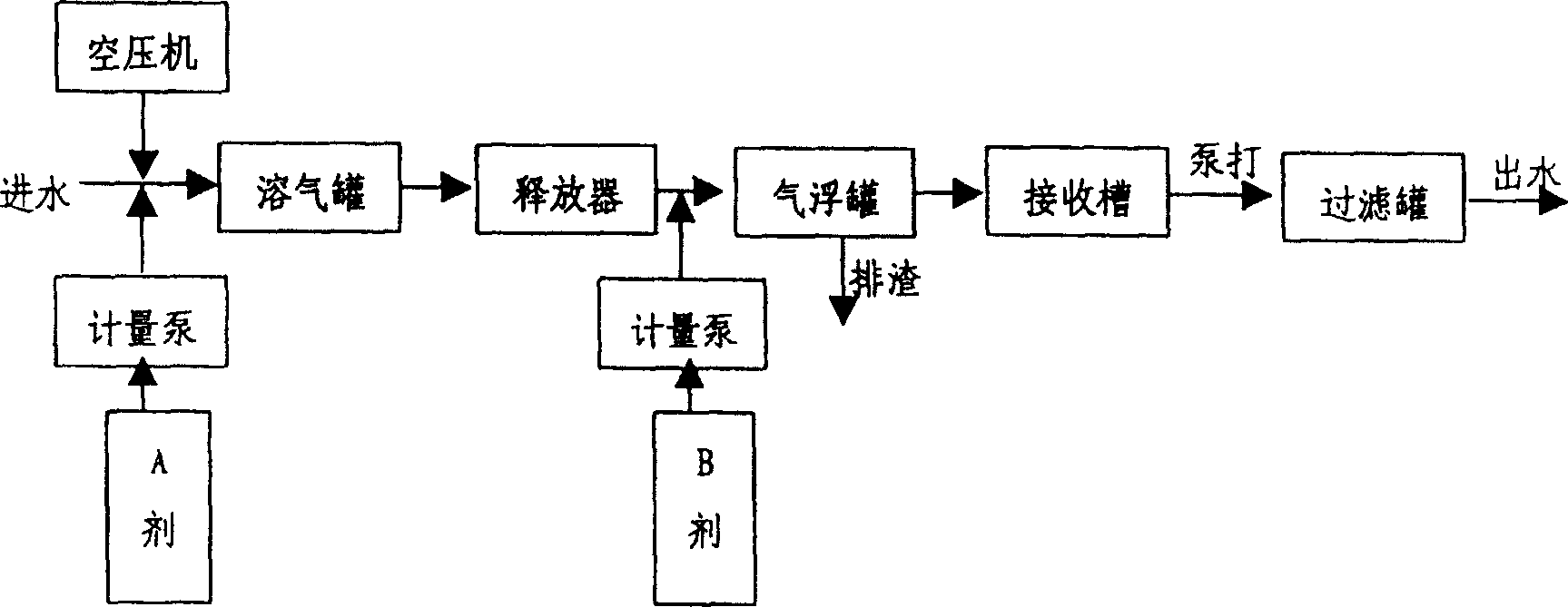Method for treating naphthenic acid sewage by flocculation-electricity heterogeneous catalysis
A heterogeneous catalysis, naphthenic acid technology, applied in chemical instruments and methods, water/sewage multi-stage treatment, water/sludge/sewage treatment, etc. , the effect is not ideal and other problems, to achieve the effect of low operating cost, easy operation and simple dosing
- Summary
- Abstract
- Description
- Claims
- Application Information
AI Technical Summary
Problems solved by technology
Method used
Image
Examples
Embodiment 1
[0026] Effect of Polyaluminum Chloride on Naphthenic Acid Wastewater Treatment I
[0027] Treatment of naphthenic acid wastewater with polyaluminum chloride and anionic polyacrylamide. COD Cr The water quality chemical oxygen demand was determined by the dichromate method (GB11914-89) for analysis, the same below.
[0028] Raw water COD Cr : 1952.6mg / L, pH: 6, the flocculation results are shown in Table 1.
[0029] aggregation
[0030] * The molecular weight of the coagulant used is above 14 million
Embodiment 2
[0032] Effect of Polyaluminum Chloride on Naphthenic Acid Wastewater Treatment II
[0033] Treatment of naphthenic acid wastewater with polyaluminum chloride and cationic polyacrylamide.
[0034] Raw water COD Cr : 1952.6mg / L, pH: 6, the experimental results are shown in Table 2.
[0035] aggregation
[0036] * The molecular weight of the coagulant used is about 5 million
Embodiment 3
[0038] Effect of Polymerized Ferric Sulfate on Naphthenic Acid Wastewater Treatment I
[0039] Naphthenic acid wastewater was treated with polyferric sulfate and anionic polyacrylamide.
[0040] Raw water COD Cr : 1860.1mg / L, pH: 6, the reaction results are shown in Table 3.
[0041] aggregation
PUM
 Login to View More
Login to View More Abstract
Description
Claims
Application Information
 Login to View More
Login to View More - R&D
- Intellectual Property
- Life Sciences
- Materials
- Tech Scout
- Unparalleled Data Quality
- Higher Quality Content
- 60% Fewer Hallucinations
Browse by: Latest US Patents, China's latest patents, Technical Efficacy Thesaurus, Application Domain, Technology Topic, Popular Technical Reports.
© 2025 PatSnap. All rights reserved.Legal|Privacy policy|Modern Slavery Act Transparency Statement|Sitemap|About US| Contact US: help@patsnap.com


